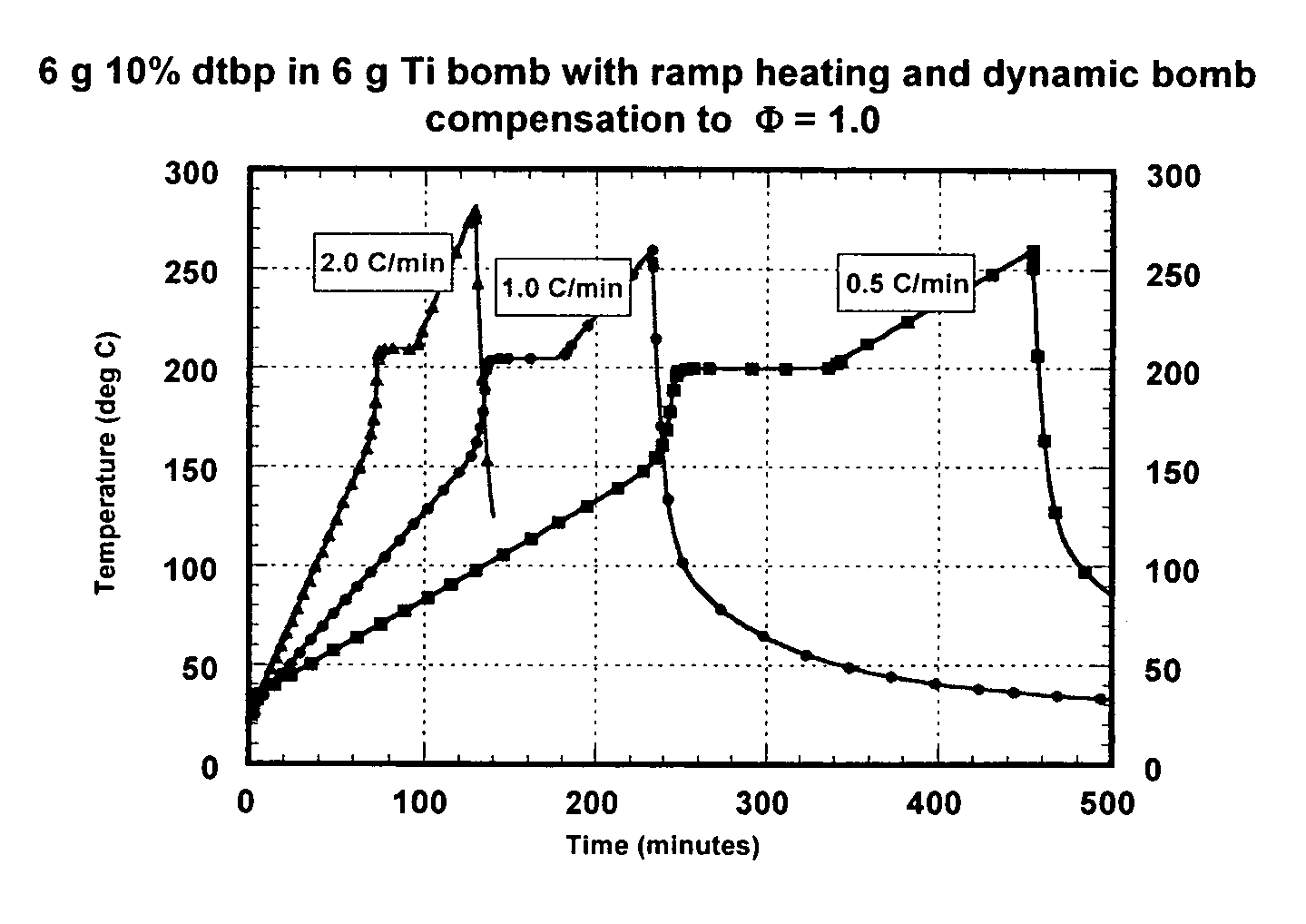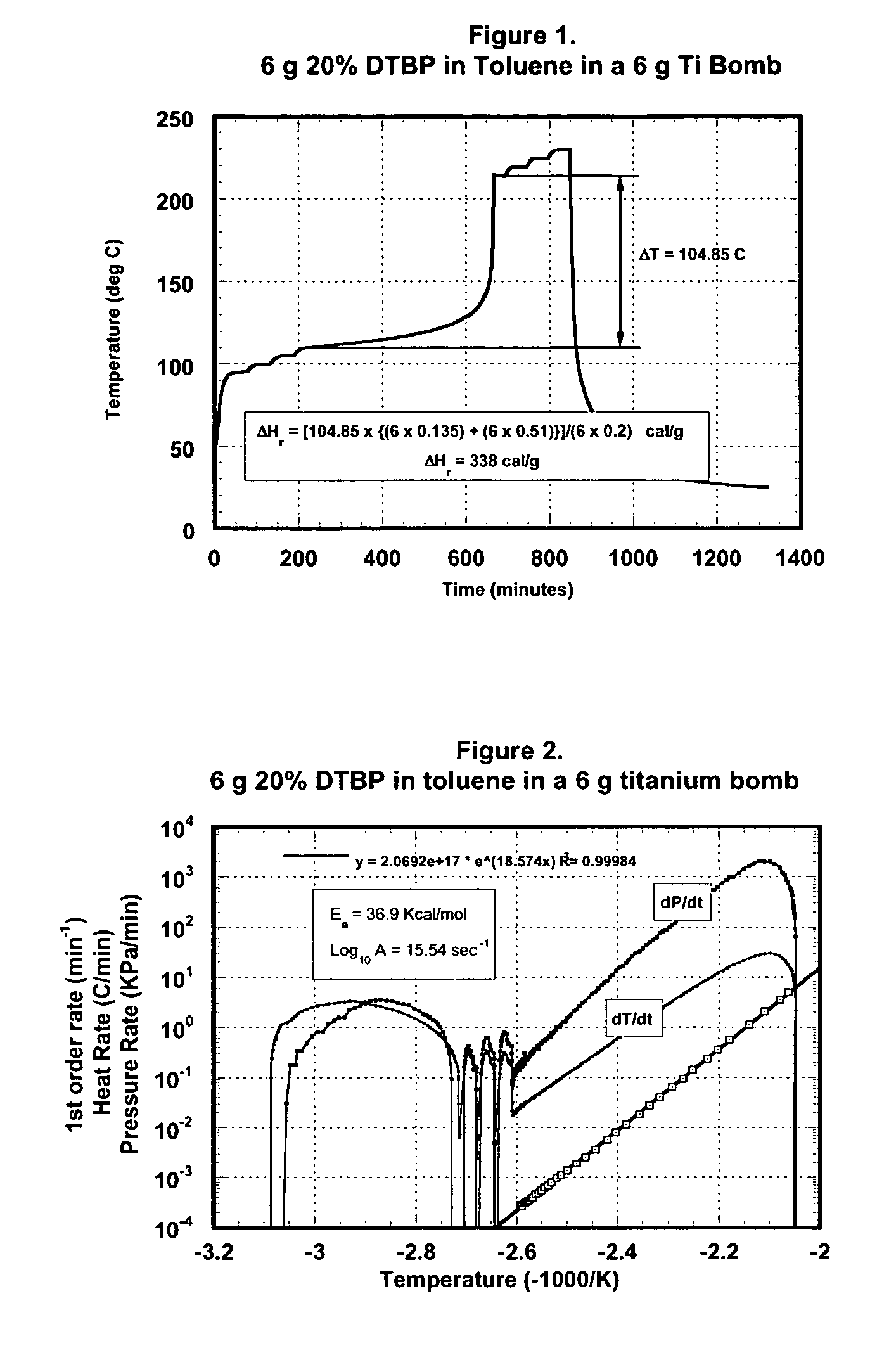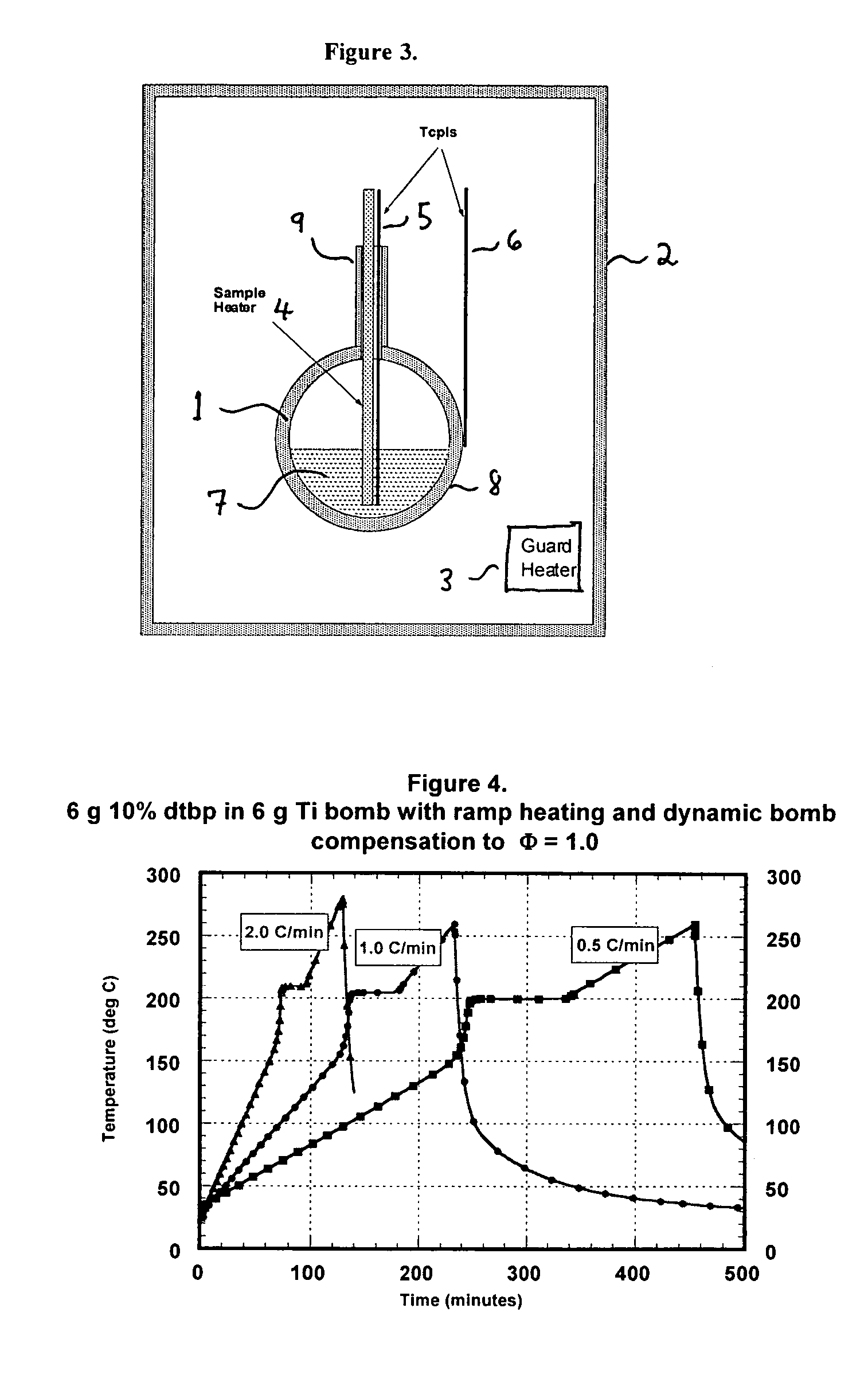Low thermal inertia scanning adiabatic calorimeter
a calorimeter and scanning adiabatic technology, applied in the direction of instruments, heat measurement, material heat development, etc., can solve the problems of limited advantages of using the method on older machines, and achieve the effect of reducing the heat output of the sample heater
- Summary
- Abstract
- Description
- Claims
- Application Information
AI Technical Summary
Benefits of technology
Problems solved by technology
Method used
Image
Examples
Embodiment Construction
[0032]The invention comprises both an improved calorimeter, and improved measurements and measurement techniques that are made possible by the improved calorimeter.
1. The Calorimeter
[0033]The calorimeter is shown schematically in FIG. 3. The calorimeter comprises a sample reaction vessel or bomb 1, an enclosure 2, guard heaters 3 connected to enclosure 2, sample heater 4, first (outer bomb) thermocouple 6, optional second (sample) thermocouple 5, sample 7, and outer surface 8 of the bomb 1. Each of the guard heaters 3, of which there are typically one to four, has an associated thermocouple (not shown). Each of the several thermocouples provides data to a controller (not illustrated). The controller regulates the amount of heat provided by the sample heater 4 and each guard heater 3. The controller also records the data from the thermocouples and performs calculations to select the amount of power to be provided to the sample heater 4 and the guard heaters 3.
[0034]The guard heaters ...
PUM
| Property | Measurement | Unit |
|---|---|---|
| temperature | aaaaa | aaaaa |
| temperature | aaaaa | aaaaa |
| time | aaaaa | aaaaa |
Abstract
Description
Claims
Application Information
 Login to View More
Login to View More - R&D
- Intellectual Property
- Life Sciences
- Materials
- Tech Scout
- Unparalleled Data Quality
- Higher Quality Content
- 60% Fewer Hallucinations
Browse by: Latest US Patents, China's latest patents, Technical Efficacy Thesaurus, Application Domain, Technology Topic, Popular Technical Reports.
© 2025 PatSnap. All rights reserved.Legal|Privacy policy|Modern Slavery Act Transparency Statement|Sitemap|About US| Contact US: help@patsnap.com



